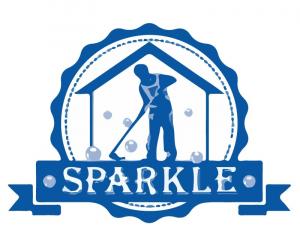The Future of Commercial Cleaning: How Smart Technology Is Transforming Global Workspaces
Commercial cleaning is moving toward automation and data-driven hygiene systems. This shift is fueling growth, with the smart cleaning market.
CALIFORNIA, CA, UNITED STATES, November 24, 2025 /EINPresswire.com/ -- Commercial cleaning practices are undergoing a major shift as workplaces worldwide adapt to post-pandemic expectations. Recent industry research indicates that automation, sensor-based systems, and data-driven hygiene management are becoming central to how organizations maintain cleanliness and workplace safety. A 2024 MarketsandMarkets report projects that the global smart cleaning market will grow from USD 3.1 billion in 2023 to USD 6.8 billion by 2028, reflecting increased interest in technological solutions, operational efficiency, and measurable hygiene outcomes.Technology’s Growing Role in Modern Cleaning
With hybrid work models becoming widespread, many organizations are moving away from fixed cleaning schedules toward demand-based approaches. According to an ISSA report, 63% of global facility managers now prioritize technology-enabled cleaning tools to support transparency, audit trails, and optimized resource deployment.
Key developments shaping the shift include:
IoT-connected systems: Devices such as occupancy sensors, smart dispensers, and connected machinery enable real-time visibility of supply levels and cleaning needs.
AI-driven analytics: Predictive models help determine when high-use areas require disinfection based on footfall and usage patterns.
Autonomous robots: Floor scrubbers, vacuum robots, and UV-C devices are increasingly being used to perform routine tasks consistently and with minimal human intervention.
Centralized hygiene dashboards: These systems compile multi-site data, helping organizations monitor compliance across large facilities.
Increasing Need for Real-Time Hygiene Monitoring
Sectors including transport infrastructure, healthcare, hospitality, and large commercial campuses are adopting higher compliance standards for hygiene documentation. Deloitte’s 2024 workplace safety study reports that 72% of multinational organizations now require digital cleaning verification from facility partners.
Three primary factors are driving this transition:
Employee health expectations: Post-pandemic research, such as the Future Workplace Survey, suggests that 78% of employees prefer working in environments where hygiene protocols are visible and measurable.
Operational cost considerations: Data-backed cleaning can reduce unnecessary cycles by up to 30%, lowering consumption of materials while improving deployment of cleaning personnel.
Sustainability targets: IoT data helps organizations monitor and reduce water, energy, and chemical usage—supporting ESG reporting without compromising hygiene quality.
How Intelligent Systems Are Reshaping Daily Cleaning Operations
1. Autonomous Cleaning Robots
Robotic devices are being used for repetitive tasks such as floor maintenance and UV-based disinfection. These tools help standardize cleaning frequency and limit human exposure to harsh chemicals.
2. Predictive Cleaning via IoT
Sensors in restrooms, meeting rooms, waste bins, and air-quality monitors allow cleaning schedules to be adjusted based on actual usage rather than predefined checklists.
3. Smart Consumable Tracking
Connected dispensers for soap, sanitizers, and paper products notify facility teams when refills are required, helping ensure uninterrupted availability.
4. Digital Reporting and Hygiene Analytics
Platforms now allow real-time reporting of cleanliness levels, inventory forecasting, and digital compliance documentation across multi-location facilities.
A Changing Standard for Global Facilities
Industry analyses suggest that smart cleaning technologies will become increasingly common as workplaces evolve. Gartner forecasts that by 2030, over half of global commercial buildings will integrate AI-supported cleaning systems as part of their operational frameworks.
As workplaces continue to balance health expectations, operational efficiency, and sustainability commitments, data-enabled cleaning methods—spanning robotics, IoT, and digital monitoring—are expected to play a growing role in defining cleaning standards across sectors.
Julia Kotch
Sparkle Office Cleaning
+61 3 8610 6350
email us here
Legal Disclaimer:
EIN Presswire provides this news content "as is" without warranty of any kind. We do not accept any responsibility or liability for the accuracy, content, images, videos, licenses, completeness, legality, or reliability of the information contained in this article. If you have any complaints or copyright issues related to this article, kindly contact the author above.

